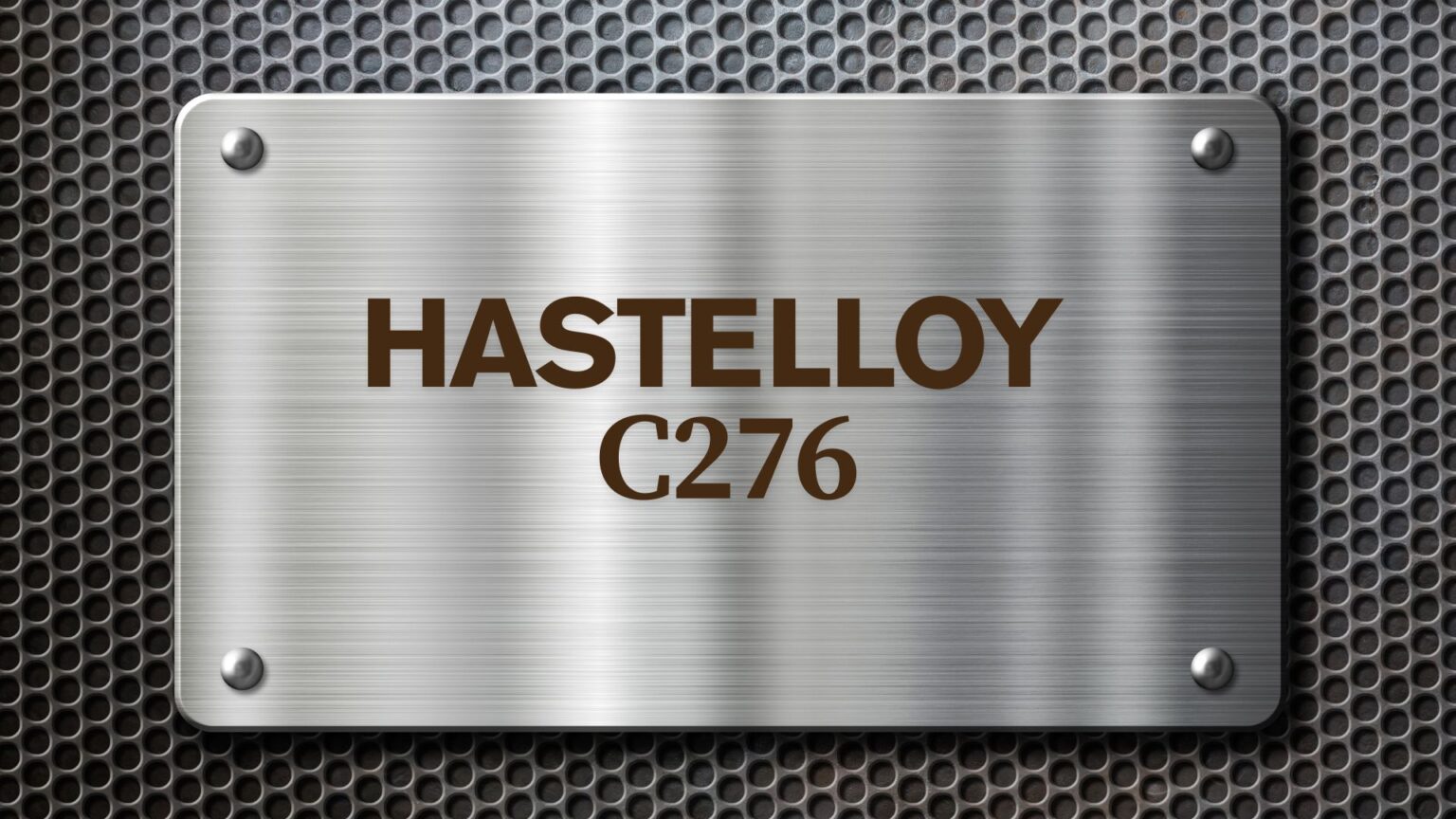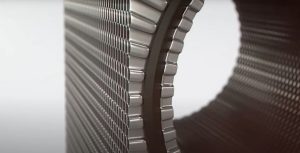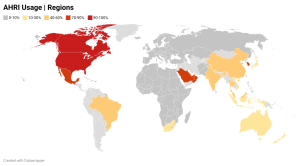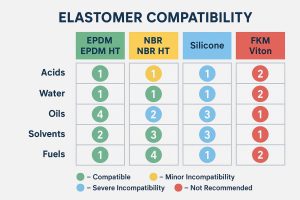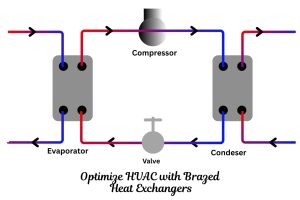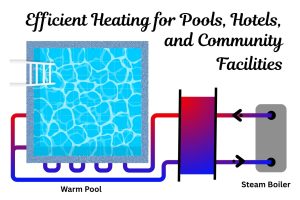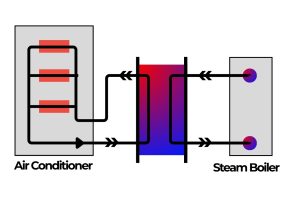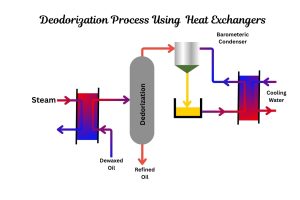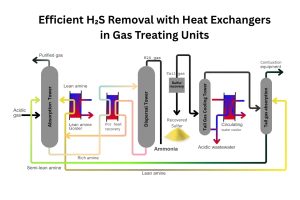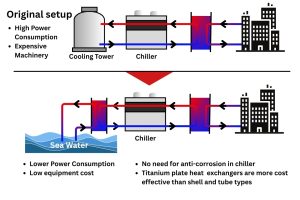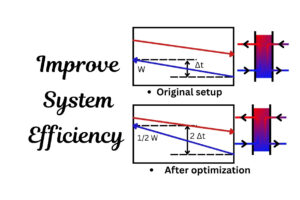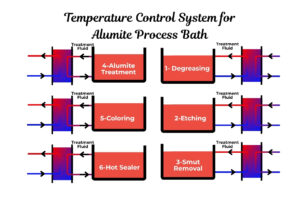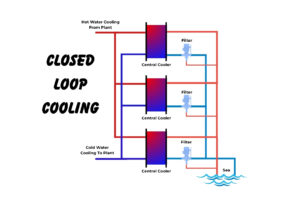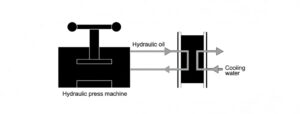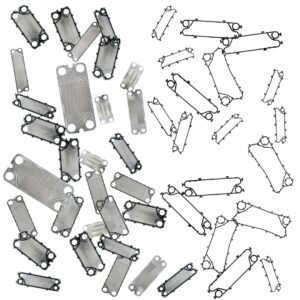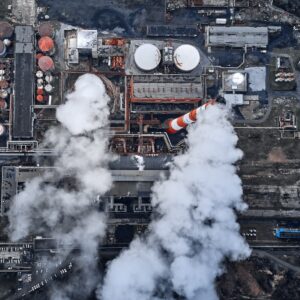Why C-276 Hastelloy Reigns Supreme for Heat Exchangers in Turkey’s Industries
Since its groundbreaking introduction in the 1960s as Hastelloy C, an alloy engineered for extreme corrosion challenges in chemical processing, the evolution continued with the 1980s arrival of its enhanced variant—C-276 Hastelloy. This material swiftly became a pivotal solution across global industries due to its unparalleled defense against pitting, cracking, and highly acidic environments. In Turkey, a nation where vital sectors such as petrochemicals, energy production, and marine operations flourish, C-276 has established itself as the cornerstone for constructing exceptionally durable heat exchangers. But amidst a plethora of material choices, what precisely elevates C-276 to this esteemed position? Let’s delve into the specifics.
C-276 Hastelloy: Unpacking Its Superiority Over Other Alloys
Unlike conventional materials like stainless steel or titanium, C-276 Hastelloy excels in the most aggressive operating conditions. Its exceptional performance is attributed to a carefully balanced composition of nickel, molybdenum, and chromium. This unique blend forms a robust protective layer against common corrosive agents prevalent in Turkey’s industrial zones, including chlorine, sulfuric acid, and seawater. Consider a shell and tube heat exchanger deployed in the coastal industrial plants of Izmir; a C-276 construction demonstrably outlasts standard alternatives by decades. Essentially, utilizing C-276 is akin to equipping your critical equipment with an impenetrable shield.
Conquering Turkey’s Harsh Environments: The Resilience of C-276
Turkey’s diverse geography, encompassing both extensive coastlines and significant industrial hubs, exposes heat exchangers to a challenging array of corrosive elements such as saltwater, acidic fumes, and high humidity. In these demanding scenarios, C-276 Hastelloy doesn’t merely endure—it excels. For instance, a shell & tube type heat exchanger operating within a Mersin oil refinery, constantly exposed to sulfides, exhibits remarkable resistance to corrosion where other materials falter. This inherent durability translates directly into reduced operational downtime and lower repair expenditures, establishing C-276 as a highly cost-effective solution for long-term investments.
Diverse Applications: Heat Exchanger Types Utilizing C-276 Hastelloy in Turkey
Two primary heat exchanger designs dominate the Turkish industrial landscape:
- Gasketed Plate Heat Exchangers: These compact and highly efficient units are ideally suited for applications in food processing and chemical plants. When constructed with C-276 plates, they can effectively withstand aggressive cleaning agents without succumbing to corrosion, ensuring longevity and operational reliability.
- Shell and Tube Heat Exchangers: Engineered for heavy-duty applications within power generation facilities and marine vessel engines, shell and tube heat exchangers made with C-276 tubes demonstrate exceptional resilience against high pressure and significant temperature fluctuations, ensuring consistent performance in demanding environments.
Considering an upgrade or a new installation? Navigate the selection process with our comprehensive guide on choosing the right heat exchanger: Your Step-by-Step Guide to Gasketed Plate Heat Exchanger Selection.
The Indispensable Role of C-276 in Shell Tube Exchangers
Within a shell and tube heat exchanger, the tubes are subjected to the most severe operational stresses. C-276’s inherent resistance to stress corrosion cracking is paramount, leading to a significant reduction in leaks and the frequency of replacements. A compelling example is a cement factory in Ankara that reported a remarkable 40% decrease in maintenance costs after upgrading to C-276 shell tube exchangers, highlighting the tangible benefits of this superior alloy.
Key Considerations: How to Select the Optimal C-276 Hastelloy Heat Exchanger
Choosing the most suitable heat exchanger model extends beyond just the material selection; it’s about ensuring a perfect fit for your specific application. Consider these crucial factors:
- Operating Environment Analysis: Facilities located in coastal regions necessitate materials with superior corrosion resistance to combat the effects of saltwater and marine air.
- Fluid Compatibility: The types of fluids involved in the heat exchange process are critical. Highly corrosive substances, such as hydrochloric acid, demand the robust protection afforded by C-276’s unique properties.
- Budgetary Planning: While the initial investment in C-276 may be higher compared to other alloys, its extended lifespan and reduced maintenance requirements ultimately lead to significant long-term cost savings.
Expert Tip: Always prioritize verification and request comprehensive material test reports from reputable suppliers. Leading providers like Heating Formula ensure transparency and quality assurance through detailed documentation.
Ubiquitous Applications: Where C-276 Heat Exchangers Excel Across Turkey
From the textile manufacturing hubs of Istanbul to the vital desalination plants in Antalya, C-276 Hastelloy is a material of choice across diverse industries in Turkey. Key sectors that heavily rely on its exceptional properties include:
- Marine Industry: Essential for saltwater cooling systems within ship engines, where resistance to marine corrosion is paramount for operational reliability.
- Chemical Processing: Critical for reactor cooling applications involving aggressive and corrosive media, ensuring safe and efficient chemical reactions.
- Power Generation: Integral to heat recovery steam generators, where the material’s high-temperature corrosion resistance contributes to energy efficiency and system longevity.
Ensuring Longevity: Accessing Spare Parts for Your C-276 Heat Exchanger
Even the most robust systems require periodic maintenance. Whether you need gaskets for plate heat exchangers or replacement tubes for shell and tube models, sourcing high-quality spare parts is crucial for maintaining optimal performance and extending the lifespan of your equipment. Heating Formula maintains a comprehensive inventory of spares specifically designed for C-276 systems, minimizing compatibility issues and ensuring seamless maintenance.
Your Trusted Partner: Why Heating Formula Stands Out for Your Heat Exchanger Needs
With over 15 years of dedicated service to the Turkish market, Heating Formula is more than just a supplier—we are your trusted partners in thermal solutions. Our expertise encompasses:
- Custom-engineered gasketed plate heat exchangers tailored to your specific industrial requirements.
- High-performance shell and tube heat exchangers built for demanding applications and long-term reliability.
Our C-276-based solutions are backed by 24/7 local support, ensuring you receive timely assistance whenever you need it, regardless of your location—from geothermal plants in Denizli to pharmaceutical units in Bursa.
Final Thoughts: The Enduring Value of Investing in C-276 Hastelloy
In Turkey’s challenging industrial environment, compromising on material quality can lead to costly repercussions. C-276 Hastelloy offers an exceptional combination of durability, efficiency, and long-term cost-effectiveness. When integrated into the appropriate heat exchanger design—such as a robust shell & tube type for heavy industries or an efficient plate model for chemical processing—it represents a strategic and intelligent investment. With experienced partners like Heating Formula readily available to provide expert guidance and support, upgrading your systems with C-276 Hastelloy is a seamless and beneficial process.
Frequently Asked Questions (FAQ)
What makes C-276 Hastelloy ideal for heat exchangers in Turkey?
C-276 Hastelloy offers unmatched resistance to pitting, cracking, and corrosion from harsh environments like saltwater, acidic fumes, and high humidity prevalent in Turkey’s industrial and coastal regions. Its unique nickel-molybdenum-chromium composition provides superior durability compared to stainless steel or titanium.
In which industries in Turkey are C-276 heat exchangers commonly used?
C-276 heat exchangers are widely used in Turkey’s marine industry for saltwater cooling, chemical processing for handling aggressive media, and power generation in heat recovery steam generators, among other demanding applications.
Are C-276 heat exchangers more expensive than those made from other materials?
While the initial cost of C-276 heat exchangers might be higher, their exceptional longevity and reduced maintenance needs often result in significant long-term cost savings, making them a cost-effective investment in the long run.
What types of heat exchangers are typically made with C-276 Hastelloy?
Common types include gasketed plate heat exchangers, ideal for efficient heat transfer and resistance to aggressive cleaning agents, and shell and tube heat exchangers, designed for heavy-duty tasks requiring resistance to high pressure and temperature swings.
How do I choose the right C-276 Hastelloy heat exchanger for my needs in Turkey?
Consider the operating environment (coastal vs. industrial), the types of fluids involved, and your budget. Coastal sites and highly corrosive fluids necessitate higher corrosion resistance. Consulting with experts like Heating Formula can provide tailored recommendations.
Where can I find reliable C-276 heat exchangers and spare parts in Turkey?
Heating Formula is a reputable supplier in Turkey with over 15 years of experience, specializing in custom-designed C-276 gasketed plate and shell and tube heat exchangers, as well as high-quality spare parts with 24/7 local support.
